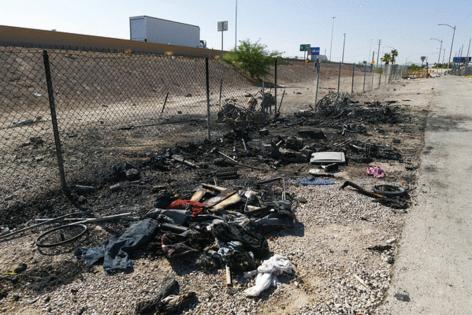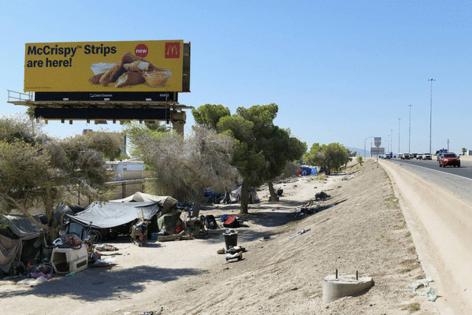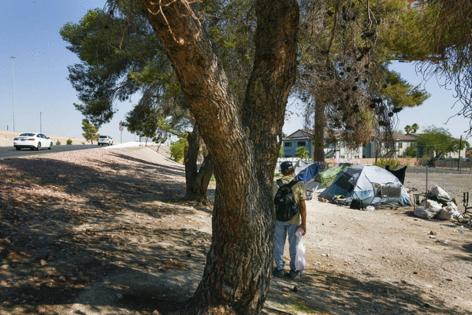New Nevada law tackles homeless encampment cleanup loophole
Published in News & Features
LAS VEGAS — Clark County crews that sweep up homeless encampments next to an east Las Vegas highway often encounter a jurisdictional loophole that doesn’t allow them to conduct full cleanups on state land. But a new law aims to close that loophole.
Assembly Bill 263, which was signed by Gov. Joe Lombardo earlier this month, will require the county to notify the Nevada Department of Transportation before cleanups next to state-operated highways to give them a chance to coordinate operations.
Democratic Assemblywoman Erica Mosca, who spearheaded the proposal, told fellow legislators in March that the matter was her east Las Vegas constituents’ main issue that “people call me about, email me about, text me about or talk to me (about) whenever they see me.”
Clark County Commissioner Tick Segerblom said he wanted a mechanism to coordinate sweeps because those displaced currently “jump over the fence into (Department of Transportation) territory.”
Outreach teams go out to affected areas days before planned routine cleanups to offer social services and to give people a warning that they will be displaced, Segerblom said.
A county ordinance that went into effect earlier this year allows police to make arrests of people who refuse to accept services or move from trails, parks, underpasses, washes, tunnels and other public places the homeless community congregates or sleeps.
Segerblom has organized town hall meetings where he’s faced the ire of residents with complaints about encampments near East Flamingo Road and South Maryland Parkway.
An interagency census of Southern Nevada’s homeless population in 2024 counted 7,906 people living on the street or staying in public shelters, a 20 percent overall increase from the previous year and the highest figure in a decade.
The annual count wasn’t conducted this year and the next is planned for 2026.
“This bill is designed to help us when we clean up these areas,” Segerblom said. “At the end of the day, these camps become just so large that they become very unsafe and very unsanitary.”
The law only applies to unincorporated Clark County. It goes into effect in October.
No ‘cross jurisdiction authority’
The bill won’t allow the county “cross-jurisdiction authority,” the department of transportation wrote in a statement. “It only facilitates coordination.”
“This notification allows NDOT to consider coordinating cleanup efforts within our own right-of-way at the same time, with the goal of preventing displacement from one side of the boundary to another,” the statement said.
The state agency said it spends about $5 million annually for its own encampment cleanups, which are mostly concentrated in Clark County.
“NDOT is not expected to increase the frequency or scope of cleanups under this bill,” the statement added. “No additional funding is attached to AB263, and NDOT is not able to spend more money on cleanups.”
Mosca said that the valley’s increasing homelessness crisis is afflicting housed and unsheltered residents of her east Las Vegas district, where the median household income of $42,000 falls below the state’s average of $70,000.
“I don’t blame the folks who are unhoused,” she said. “I do know that our low-income communities are disproportionately taking the brunt of a community issue.”
Mosca said AB 263 only addresses a fraction of the issue.
“This bill is not solving housing, this bill is not helping mental health,” she said.
___
©2025 Las Vegas Review-Journal. Visit reviewjournal.com.. Distributed by Tribune Content Agency, LLC.












Comments